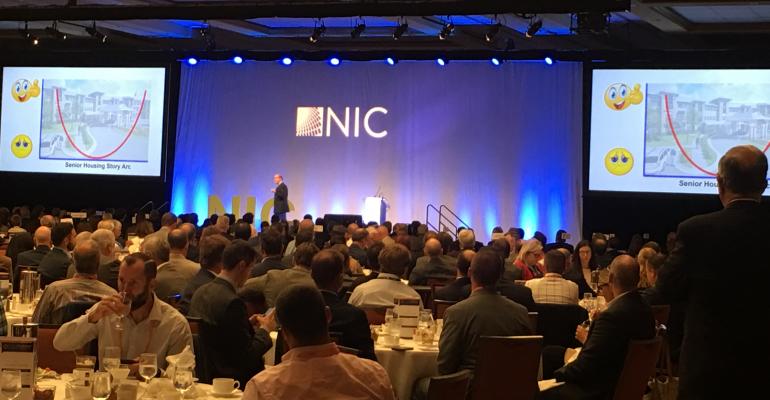The National Investment Center for Seniors Housing & Care wrapped up the second day of its conference sessions on Thursday by highlighting the state of the economy and the challenges and investment opportunities surrounding the changing seniors housing sector. Dr. Janet L. Yellen, former chair of the Federal Reserve, was the key speaker during the opening general session at the event. Here are some takeaways from Thursday’s sessions.
- “The economy is in a good place now. There are a lot of recession fears out there, there are reasons to worry. But I think saying the economy is in a good place and is doing fine right now is an important starting point,” according to Janet Yellen. While Yellen noted that the “labor market is doing great” and the inflation rate continues to run below 2.0 percent, she admitted that the economy has slowed and growth has moderated.
- Many industry sources anticipate further interest rate cuts before the end of the year, and Yellen echoed those sentiments. “I fully expect [the Federal Reserve] to do more,” she said. “And one reason they’re able to do more, and they want to do more, is even though we have a really tight labor market, inflation is very low.”
- The inverted yield curve is unlikely to signal a recession this time around, according to Yellen. “I know what I’m about to say is dangerous, I’m going to say, I think this time is different.” Though, she noted that “it is not good” for banks to have an inverted yield curve, Yellen said, “I don’t think in the U.S. economy, the impact on willingness to lend of banks is the overwhelming channel of influence and I still think that lower rates generally tend to boost asset prices and property prices.”
- During one panel discussion on valuations in the seniors housing space that included Zach Bowyer, managing director with JLL and Charlie Shoop, senior vice president with KeyBank, among others, five panelists said cap rates in the seniors housing sector will remain flat, while one skipped the question.
- Pressures surrounding finding skilled labor, scarcity of talented operators and outside interest from a growing pool of investors will be the biggest challenges facing the seniors housing space in the near term, according to the panel of six.
- Patricia Boyle, professor at Rush University, suggests seniors housing owners include a “purpose ambassador” at their properties—someone in charge of keeping morale up for seniors. To do this, seniors housing operators might have to partner with local hospitals, schools, or libraries in order to help seniors find purpose in life. “By some estimates, purpose of life adds another five to seven years of lifespan. This is huge for someone in their 70s and 80s,” says Boyle. “My challenge to you is to take this science back to your organizations and help your residents find their purpose.”
- “Predictive analytics is taking large datasets and information, connecting them to outcomes and being able to analyze over time these large data sets and be able to prove their ability to predict a certain outcome,” says David Inns, CEO of GreatCall, a health technology company. “What we’ve been doing is taking these concepts and using activities of daily living of seniors, being able to create massive data sets on the thousands of seniors we’ve been monitoring over several years and working with healthcare companies to know what outcomes are actually happening. We can take those datasets, and over time predict complications that are arising.” Predictive analytics can reduce costly medical episodes before they happen, a powerful tool for seniors housing operators.
0 comments
Hide comments





